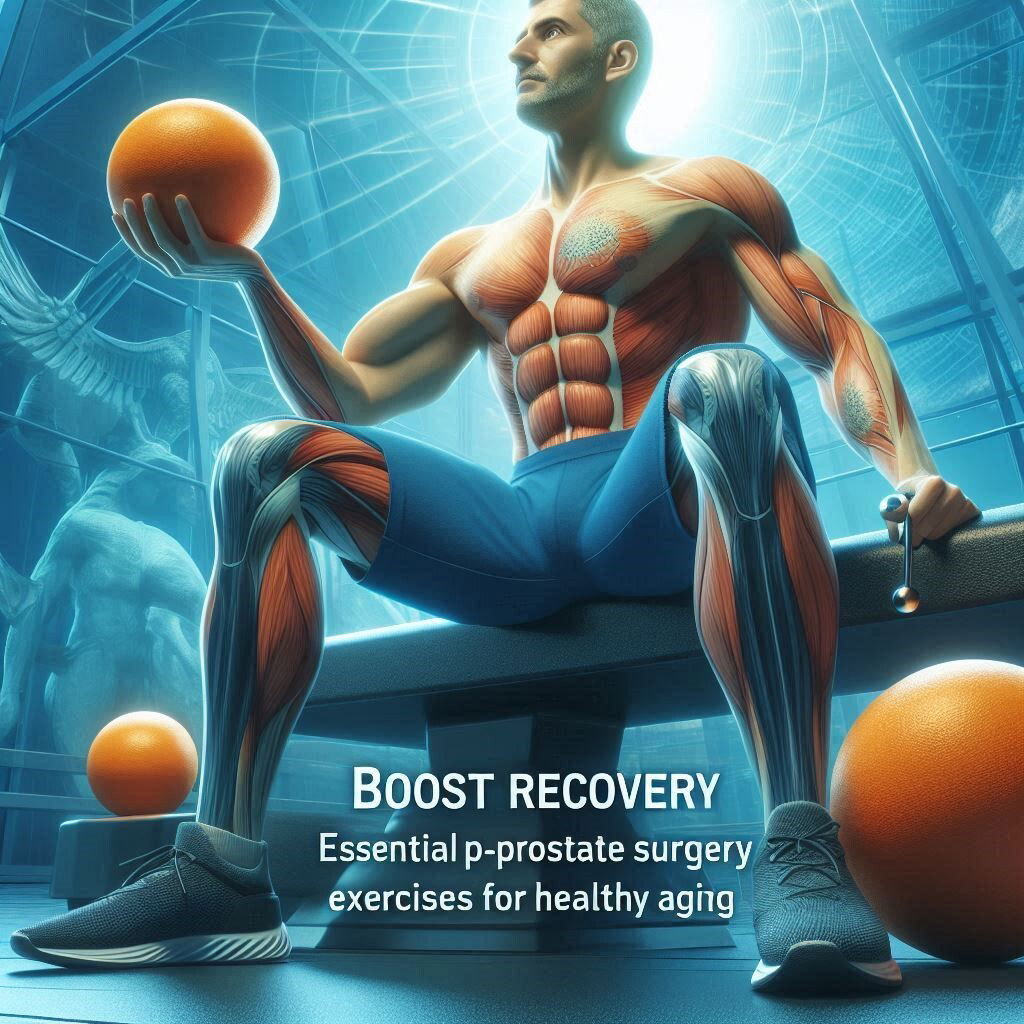Boost Recovery: Essential Post-Prostate Surgery Exercises for Healthy Aging

Introduction
Recovering from prostate surgery is a challenging process, but the right exercises can significantly help and facilitate early aging. Exercises after surgery help in rebuilding functional attributes to the body and overall health. This paper aims to discuss the types of exercises necessary in the recovery process. Read on in this post to know what you can do for early aging! The insights provided will be beneficial irrespective of whether you want to regain your urinary control, get your strength back, or improve your overall health.
Types of Prostate Surgery
The gravitas of the types of surgery may vary. Some are conducted for prostate cancer. Others work to treat benign prostatic hyperplasia and other related diseases. Some common example types of Prostate surgery are:
- Radical prostatectomy
- Transurethral resection prostate surgery (TURP)
- Laparoscopic surgery
Challenges
Post-prostate surgery challenges range from urinary incontinence, weakness or feebleness, and erectile dysfunction. These are worrying conditions that may equally lead to undesirable outcomes in our daily livelihoods and age the individual in question.
Importance of post-surgery exercises
The role of workout activities is essential as it helps an individual restore functional properties such as muscle strength, urinary control, and the general well-being of an individual. Additionally, these activities also manage the stress levels of an individual.
Key exercises after Prostate surgery
1. Pelvic exercises
Kegel Exercises
Tighten the muscles you use to stop urinating and hold for a count of five. Relax for five seconds and repeat 10 times. Aim to do three sets per day.
2. Aerobic Exercises
Walking
Walking is a low-impact aerobic exercise that promotes cardiovascular health and overall well-being. It’s gentle on the body and aids in gradually building strength and endurance. Tips for Walking: Start with short, frequent walks and gradually increase the duration as your stamina improves. Aim for at least 30 minutes of walking most days of the week.
Swimming Swimming provides a full-body workout that is easy on the joints and helps improve cardiovascular health. The body, being buoyant in the water, supports the flow of blood in our body and reduces stress on the pelvic area. Swimming Guidelines: Start with regular and slow swimming sessions and gradually increase your pace. Try to hold the good form of swimming.
3. Strengthening Exercises
Leg Lifts
Leg lifts help in strengthening the lower abdominal muscles and improving overall core stability. How to Perform Leg Lifts: Lie on your back with your legs straight. Slowly lift one leg to about 45 degrees and hold it for a few seconds before lowering it. Follow this routine while doing 10 reps for one leg before switching to the other. Repeat for the other leg.
Bridge Exercise
The bridge exercise helps in developing your glutes, lower back, and pelvic floor muscles.
How to Perform the Bridge Exercise: Lie down with your back and bend your knees. Make sure your feet are flat on the ground. Then, rest your hands on the sides, with your palms facing the floor. Lift your hips to the ceiling and hold for five to 10 seconds before lowering it back to the ground. Follow this routine while doing 10-15 reps.
4. Flexibility and Balance Exercises
Stretching
Stretching is an essential part to maintain the flexibility in the lower back and surrounding muscles. Undoubtedly, stretching helps overcome stiffness. Effective Stretches: Include lower back, hamstring, and hip muscle stretches. Hold each stretch for 20-30 seconds, and repeat it two to three times.
Yoga Yoga improves flexibility, balance, and general body strength, which is very important in the recovery phase. • Yoga Poses: Cat-cow, child’s pose, and seated forward bend are some of the gentle stretches that play a role in improving flexibility and releasing tension.
5. Post-Workout Cool Down
Gentle stretching is important as it helps the muscles relax and prevents stiffness. Cool Down Routine: take 5-10 minutes to do some gentle stretching focusing on the muscles that have been working out.
6. Hydration
Drink enough water before, during, and after exercises as this is very helpful in muscle recovery and plays a role in overall health.
Ways to have a successful recovery
- Listen to your Body: it is always important to listen to the body as it helps to gauge the effects of exercise. If the pain persists, the workout should stop and in case it continues, one should consult a health provider.
- Start Slow and Progress Gradually: starting slowly and increasing the intensity of the exercises as the body becomes stronger and more stamina is essential has most of the times ensure that recovery is injury-free and in a more controlled measure as per body power.
- Include Rest Days: the body needs time to rest and recover and this is, therefore, an important aspect to include in a workout plan as it prevents over-stretching of the body.
- Stay Consistent: the main secret of a successful recovery process is being disciplined and take part in daily exercises, even if it means doing just some little wok or some stretching.
- Balanced Diet: a balanced diet plays a role in maintaining good health and the same time in fast recover; therefore, it is important to ensure a diet that is rich in proteins, fruits, vegetables, grains, and oils.
- Hydration: water acts as a detoxifying agent and helps keep body function to optimum as it is also the body recover agent.
- Supplements: Consider omega-3 fatty acid, vitamin D and calcium supplements for overall health and recovery. Be sure to consult your health care provider before adding any new supplements.
Psychological Benefits of Exercise
- Reducing Stress and Anxiety: Exercise leads to the release of endorphins, which reduce stress and anxiety. Overall, exercise improves your mood and mental status.
- Improving Sleep: Regular exercise ensures quality sleep, which is vital for overall health and recovery.
- Boosting Confidence and Self-Esteem: Even the slightest achievement of one fitness goal is a great boost to your confidence. Having a positive effect on your life as a result of staying active ensures you’re properly managing your recovery.
Frequently Asked Questions
Q1. What are the best exercises after prostate surgery?
Kegel exercises, walking, swimming, leg lifts, bridge exercises, stretching and yoga are all good exercises after a prostate surgery.
Q2. How soon can I start exercising after prostate surgery?
Allow yourself some time to start regaining overall strength. However, doctors recommend 30 minutes of moderate exercise for most days of the week.
Q3. Can exercise worsen my condition after prostate surgery?
It should not worsen your condition as long as you remember to start slow and cut out strenuous exercises. Overall, exercise should be gentle and easy to accommodate.
Q4. What exercises should I avoid?
You should avoid heavy lifting and high-impact activities just after the surgery. However, make sure you are sticking to gentle, low-impact activities.
Q5. How can I manage pain during exercises?
Proper warm up, wearing adequate shoes and considering supportive devices should do the trick. You can occasionally ice down the exercises as well.
Q6. Is it obligatory to visit a doctor before starting exercises routine after prostate surgery?
Yes, it is always useful to ask a healthcare provider before starting an exercise routine, particularly after the surgery.
Conclusion
Exercises performed for post-prostate surgery can produce significant benefits on the process of recovery and support healthy aging. Focusing on pelvic floor, aerobic, strengthening, and flexibility exercises will allow to manage symptoms and stay active. Be sure to listen to your body, start slow, and work on a routine. It is possible to make recovery much easier by persistent actions while also boosting overall well-being for a better and fruitful life post-surgery.
